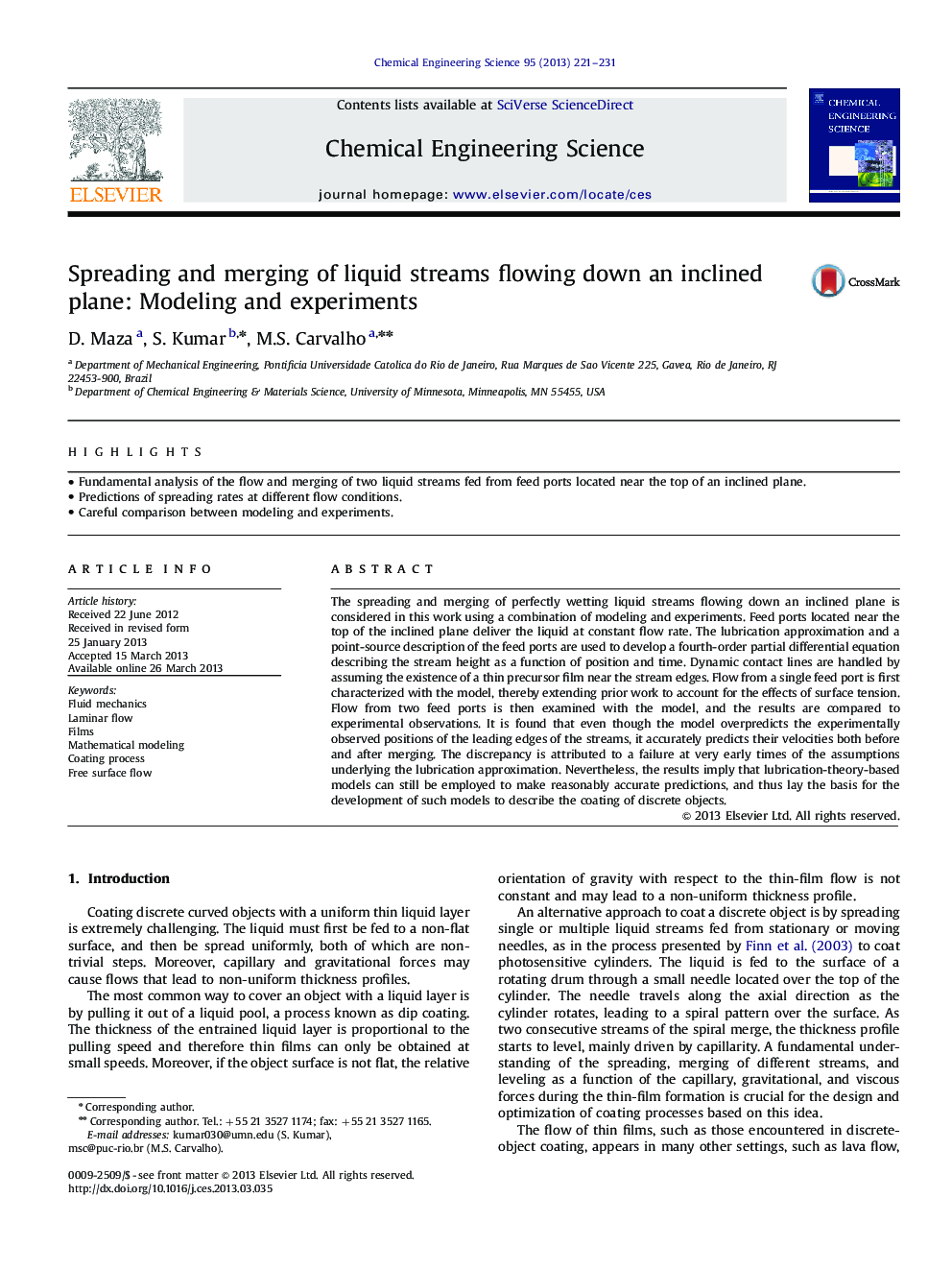| Article ID | Journal | Published Year | Pages | File Type |
|---|---|---|---|---|
| 155384 | Chemical Engineering Science | 2013 | 11 Pages |
Abstract
The spreading and merging of perfectly wetting liquid streams flowing down an inclined plane is considered in this work using a combination of modeling and experiments. Feed ports located near the top of the inclined plane deliver the liquid at constant flow rate. The lubrication approximation and a point-source description of the feed ports are used to develop a fourth-order partial differential equation describing the stream height as a function of position and time. Dynamic contact lines are handled by assuming the existence of a thin precursor film near the stream edges. Flow from a single feed port is first characterized with the model, thereby extending prior work to account for the effects of surface tension. Flow from two feed ports is then examined with the model, and the results are compared to experimental observations. It is found that even though the model overpredicts the experimentally observed positions of the leading edges of the streams, it accurately predicts their velocities both before and after merging. The discrepancy is attributed to a failure at very early times of the assumptions underlying the lubrication approximation. Nevertheless, the results imply that lubrication-theory-based models can still be employed to make reasonably accurate predictions, and thus lay the basis for the development of such models to describe the coating of discrete objects.
Related Topics
Physical Sciences and Engineering
Chemical Engineering
Chemical Engineering (General)
Authors
D. Maza, S. Kumar, M.S. Carvalho,
